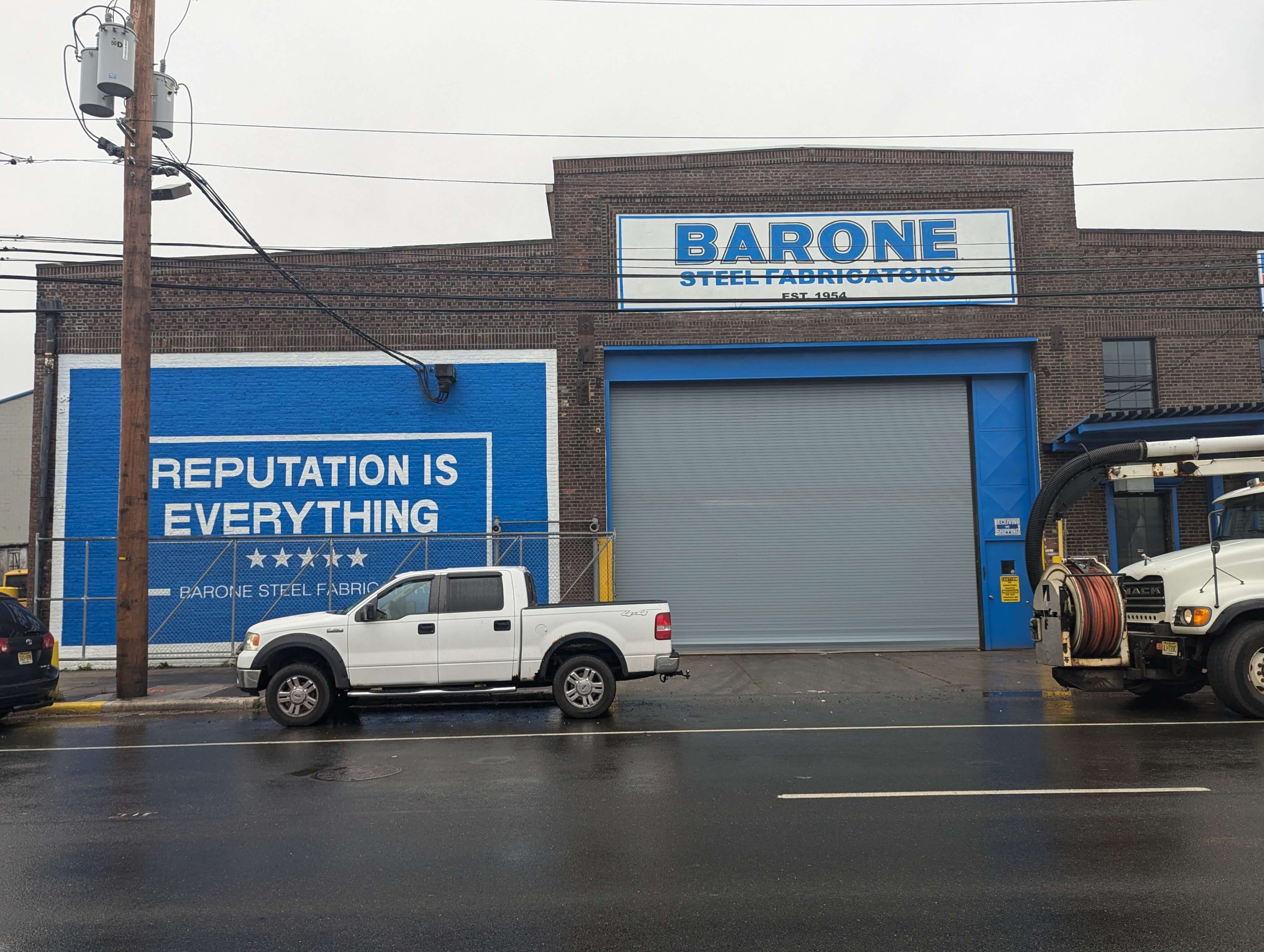Hand-painted walls have always meant permanence. Decades ago, New York and New Jersey’s industrial buildings carried their names in paint, steel companies, warehouses, and machine shops marked their presence on brick. Many of those ghost signs still exist today across Brooklyn, Jersey City, and Newark, visible under layers of time and weather. They speak to a period when the city’s trades defined its skyline and when a business didn’t rent space on a wall, it earned it.
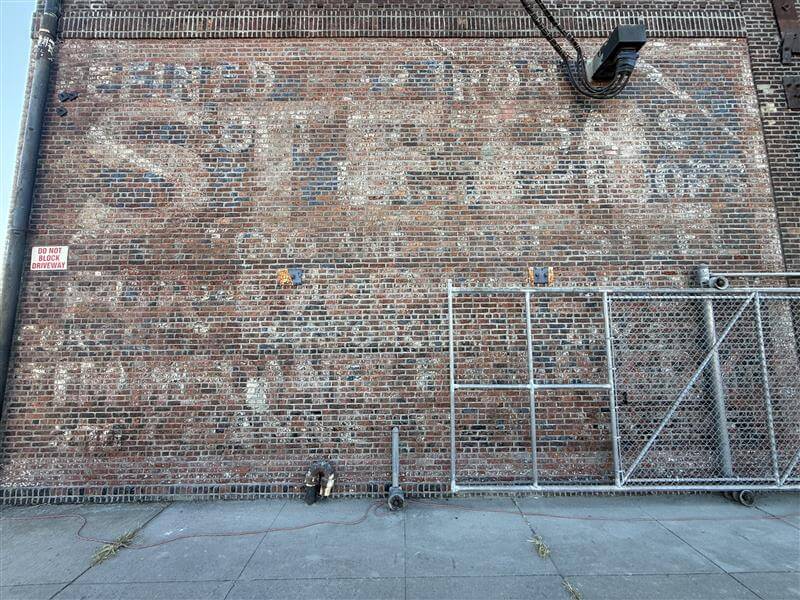
That same mindset shaped our recent project for Barone Steel in New Jersey. The client came to us with a detailed blueprint of their building façade and a clear request: a 100% brush-stroke, hand-painted wall sign, done traditionally and built to last as long as the structure itself. No vinyl. No stencils. Just brush, paint, and precision.
A Wall Built for Paint
The job spanned two surfaces, a 33-foot by 13-foot main wall and a 20-foot by 6-foot bulkhead section, totaling over 600 square feet of brickwork. The surface wasn’t uniform: heavy mortar lines, pipes, and conduits cut through the design area. Every letter had to be measured and positioned by hand to stay aligned with the architecture.

Our team began with manual sketches and scale drawings based on the façade blueprint. Letter spacing, proportions, and placement zones were tested repeatedly on paper until balance felt right. On site, those drawings were translated into full-scale chalk markings. The layout process alone took two full days of measuring, re-checking levels, and matching letter heights against the building’s structural grid.
Paint, Weather, and Process
The design for Barone Steel’s wall was bold and straightforward: a solid blue field carrying the company’s motto — “Reputation Is Everything” — in large white block letters, surrounded by a precise white rectangular frame and five centered stars. Every line had to be clean and consistent across more than thirty feet of brickwork.
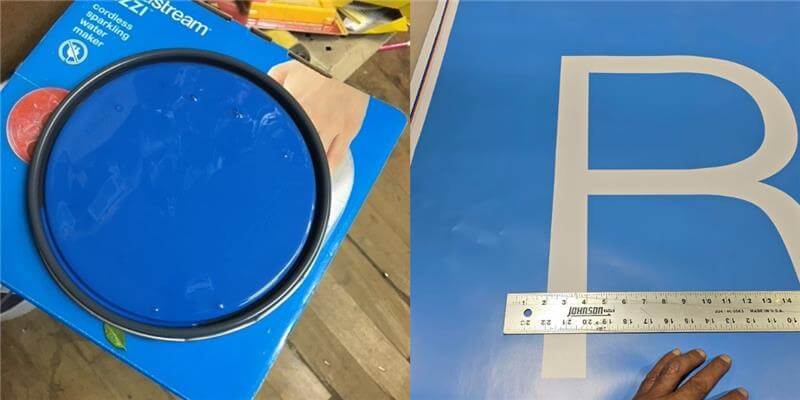
The full background was first hand-coated with Benjamin Moore’s royal blue exterior enamel, rolled evenly in two layers to saturate the brick pores while maintaining surface texture. Once the base color cured, the lettering layout was redrawn by hand using chalk guidelines and measured grids derived from the building blueprint. Each letter was painted freehand using fine natural bristle lettering brushes, ensuring crisp edges without stencil bleed.
The design demanded edge accuracy within fractions of an inch; even the star points and frame corners were aligned manually to stay level across uneven mortar joints. It was less about decoration and more about discipline, a test of steady lines over rough brick and long work hours.
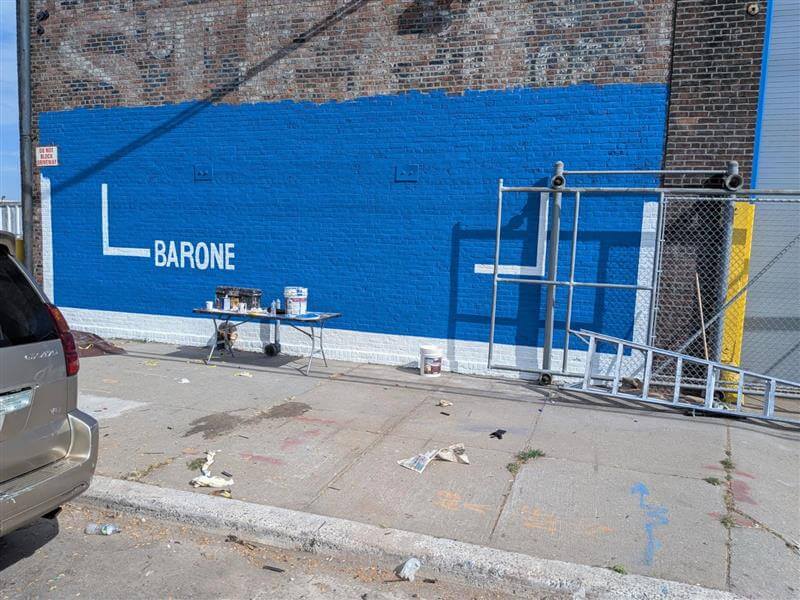
New Jersey’s spring weather added its usual challenges: humidity delayed drying, and outdoor access had to be coordinated between rain spells. The team revisited the site multiple times to recoat, inspect, and verify color consistency across both wall sections. The result is a flat, vibrant blue finish that reads strong from distance yet retains the hand-painted quality of real brushwork up close.
Finishing and Protection
After the final coat, the entire surface received a matte clear UV-resistant sealant to protect against sunlight and moisture. The finish isn’t glossy or plastic; it integrates with the wall, maintaining the texture of the brick while sealing pigment into the surface.
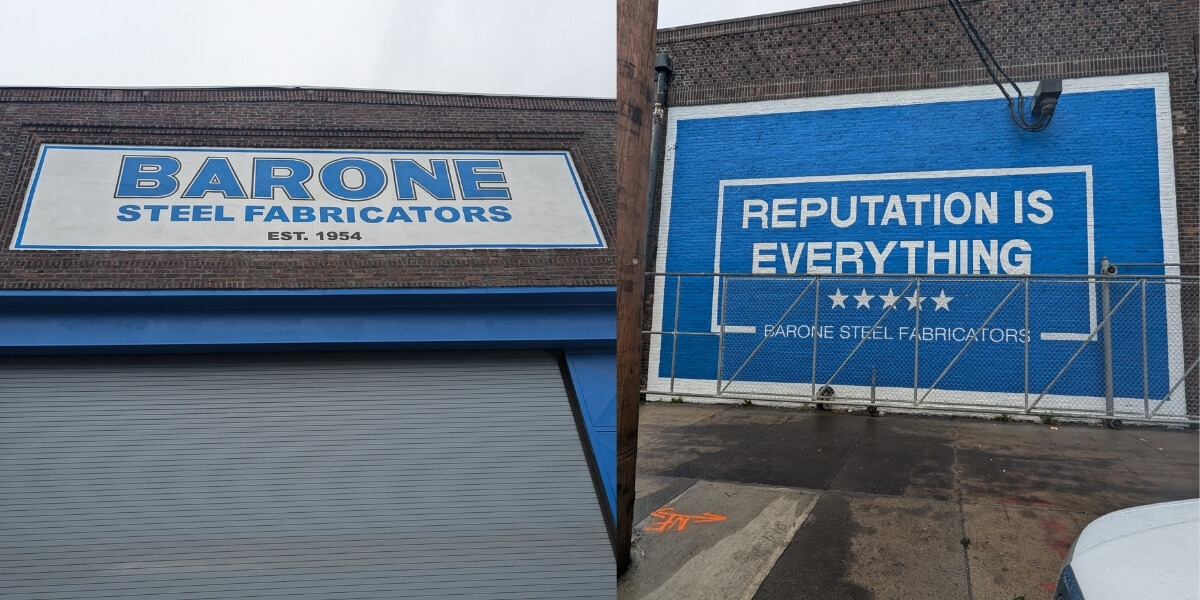
From the road, the letters read clean and sharp. Up close, the brushwork tells the story — visible, confident, and unmistakably hand-done. As the light changes throughout the day, the wall shifts character: crisp white edges in daylight, softer tone at dusk. It’s the kind of sign that belongs to the building, not just on it.
Durability and Sustainability
Hand-painted signage continues to outperform synthetic alternatives for long-term outdoor use. Where printed vinyl or applied graphics peel and fade within 3–5 years, a properly coated painted sign can hold color for a decade or more before retouching.
It also leaves no plastic waste, uses minimal materials, and weathers naturally with the structure a durable, low-impact finish that reinforces authenticity.
Across the region, more architects and developers are specifying hand-painted façades for that reason. It’s practical, sustainable, and aesthetically tied to the industrial identity of the Northeast.
Why This Work Still Matters
For Barone Steel, this wasn’t branding, it was continuity. The finished wall reflects the same values as the company’s own work: strength, precision, and reliability. The name isn’t printed; it’s built in.
Projects like this remind us that sign painting is not a lost craft. It’s a working skill that still has a place on modern buildings especially those built of real materials meant to last.
Looking for a Hand-Painted Sign for Your Facility?
Our team continues to produce custom wall and façade lettering across New York, New Jersey, and the tri-state area entirely by hand, from layout to final coat.
Visit our Hand-Painted Signs & Murals page to learn more about our process, materials, and completed projects.


